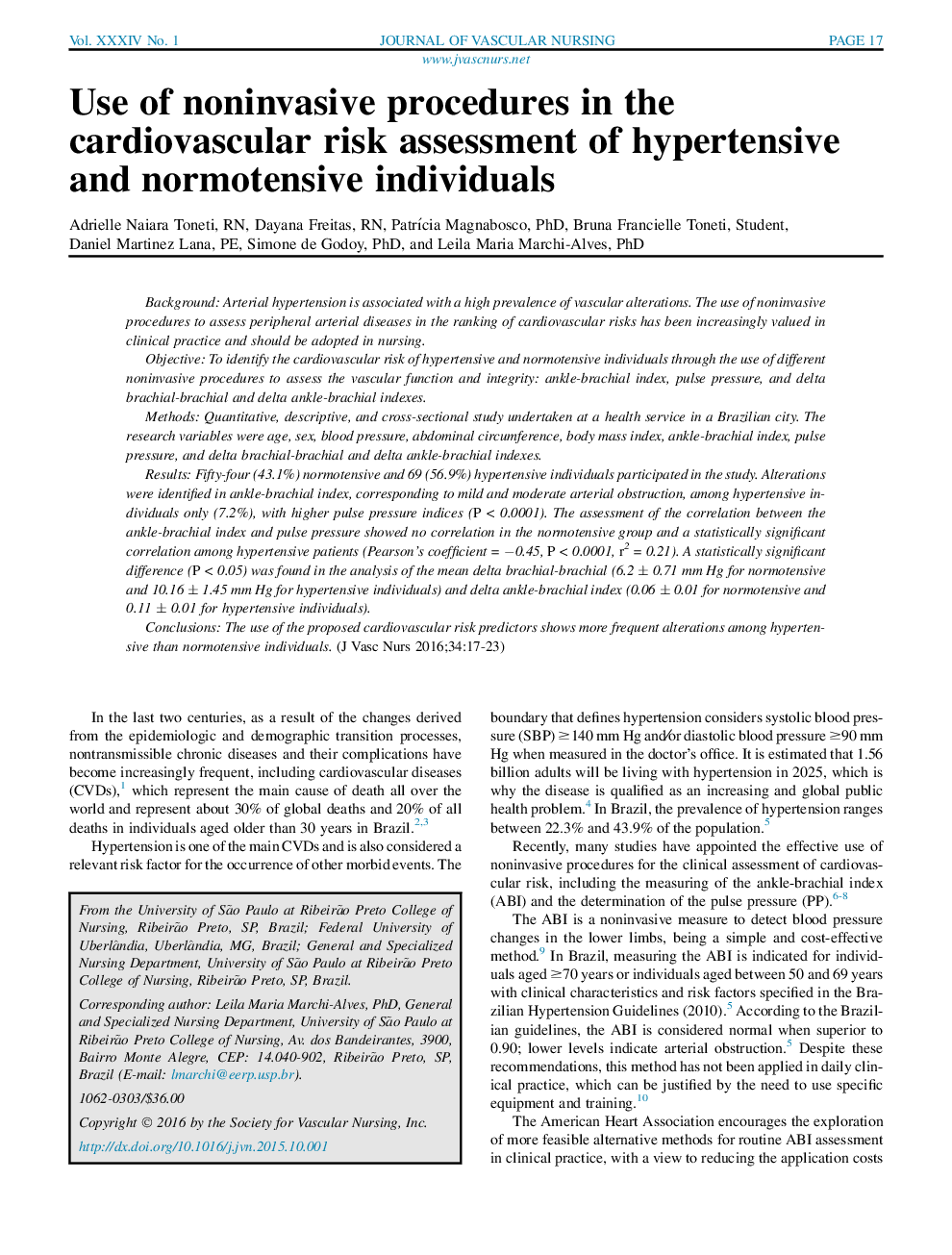| Article ID | Journal | Published Year | Pages | File Type |
|---|---|---|---|---|
| 2671938 | Journal of Vascular Nursing | 2016 | 7 Pages |
•This study strengthen the importance of using the tools employed in routine clinical assessment•When using cardiovascular risk predictors, hypertensive showed higher frequency of alterations•The use of the measuring instruments used is relevant and can contribute to the nurses' practice•Nurses have not yet studied the association of non-invasive cardiovascular risk assessment tools
BackgroundArterial hypertension is associated with a high prevalence of vascular alterations. The use of noninvasive procedures to assess peripheral arterial diseases in the ranking of cardiovascular risks has been increasingly valued in clinical practice and should be adopted in nursing.ObjectiveTo identify the cardiovascular risk of hypertensive and normotensive individuals through the use of different noninvasive procedures to assess the vascular function and integrity: ankle-brachial index, pulse pressure, and delta brachial-brachial and delta ankle-brachial indexes.MethodsQuantitative, descriptive, and cross-sectional study undertaken at a health service in a Brazilian city. The research variables were age, sex, blood pressure, abdominal circumference, body mass index, ankle-brachial index, pulse pressure, and delta brachial-brachial and delta ankle-brachial indexes.ResultsFifty-four (43.1%) normotensive and 69 (56.9%) hypertensive individuals participated in the study. Alterations were identified in ankle-brachial index, corresponding to mild and moderate arterial obstruction, among hypertensive individuals only (7.2%), with higher pulse pressure indices (P < 0.0001). The assessment of the correlation between the ankle-brachial index and pulse pressure showed no correlation in the normotensive group and a statistically significant correlation among hypertensive patients (Pearson's coefficient = −0.45, P < 0.0001, r2 = 0.21). A statistically significant difference (P < 0.05) was found in the analysis of the mean delta brachial-brachial (6.2 ± 0.71 mm Hg for normotensive and 10.16 ± 1.45 mm Hg for hypertensive individuals) and delta ankle-brachial index (0.06 ± 0.01 for normotensive and 0.11 ± 0.01 for hypertensive individuals).ConclusionsThe use of the proposed cardiovascular risk predictors shows more frequent alterations among hypertensive than normotensive individuals.
